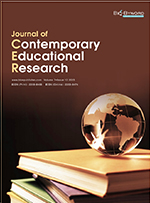Abstract
Da Sheng Bian, a significant work on obstetrics and gynecology that emerged in the early Qing Dynasty, was initially published as “A Treatise on Midwifery” in 1842 by William Lockhart, a British missionary to China. In 1894, John G. Kerr, an American missionary, translated the text as “The Tat Shang Pin”. This paper conducts a comparative study of the two English translations using a self-constructed English-Chinese parallel corpus of Da Sheng Bian. The study explores the translation styles of the two translators by examining the token-types ratio and frequency at the lexical level, mean sentence length at the syntactic level, and the use of conjunctions at the discourse level. The observed differences in translation styles between the two translations are analyzed in relation to the translators’ backgrounds and translation strategies.
References
Li Y, 2009, Examination of the Authorship of the Famous Obstetrics Book Da Sheng Bian. Traditional Chinese Medicine Culture, 4(4): 31–32.
Lockhart W, 1842, A Treatise on Midwifery. The Dublin Journal of Medical Science, 20: 333–369.
Kerr JG, 1894, Tat Shang Pin. Annals of Gynaecology and Paediatry, 7(6): 326–333.
Kerr JG, 1894, Midwifery Made Easy. The American Gynecological & Obstetrical Journal, 5(8): 461–468.
Li J, Guo Q, 2016, The Translation and Dissemination of Da Sheng Bian and the Evaluation of Chinese Obstetrics. Journal of Guangzhou University of Traditional Chinese Medicine, 33(6): 896–898.
Yong W, Zhu Y, The First English Translation of Traditional Chinese medicine Da Sheng Bian. Chinese Science and Technology Translation, 35(1): 52–55.
Cheng H, 2022, Distorted Evidence: Research on J. G. Kerr’s Translation of Da Sheng Bian, thesis, Guangxi University.
Hu K, Xie L, 2017, Towards a Corpus-Based Study of Translator’s Style. Chinese Translators Journal, 38(2): 12–18 + 128.
Xu M, Pei W, 2022, A Review of Corpus-Based Studies on the English Translation of Chinese Sci-Tech Classics: The State, Significance, and Prospects. Foreign Languages and Their Teaching, 326(5): 116–124 + 149.
Baker M, 2001, Towards a Methodology for Investigating the Style of a Literary Translator. Target International Journal of Translation Studies, 12(2): 241–266. https://doi.org/10.1075/target.12.2.04bak
Pan H, 2022, Research on Construction of English Corpus of Suwen: Great Theory on Yin-Yang Corresponding to Nature. Journal of Basic Chinese Medicine, 28(4): 630–634 + 666.
Hu K, 2017, Corpus Translation. Shanghai Jiao Tong University Press, Shanghai, 230.
Wang K, 2003, Sentence Parallelism in English-Chinese/Chinese-English: A Corpus-Based Investigation. Foreign Language Teaching and Research, 35(6): 410–416.
Butler C, 1985, Studies in Linguistics. Longman Group Limited, London, 121.
Halliday MAK, Hasan R, 1976, Cohesion in English. Longman Group Limited, London.
Sun X, 1996, “Cohesion” and “Coherence” in English Discourse Analysis. Foreign Language Research, 19(1): 25.
Ma Y, Sun H, Jia Q, 2020, Corpus-Based Contrastive Study of Conjunctions in Chinese Classic Translation. Shanghai Journal of Translators, 155(6): 40–45.
Quirk R, Greenbaum S, Leech G, et al, 1985, A Comprehensive Grammar of the English Language. Longman Group Limited, London.
Huang G, 2012, “Paraphrase” as a Strategy in Translating Lun Yu (The Analects) into English: A Functional Linguistics Perspective. Journal of University of Science and Technology Beijing (Social Sciences Edition), 3: 16–21.
Ju Y, 2018, A Corpus-Based Comparative Analysis of Sentence Connectors in Two English Translations of The Analects. Foreign Language and Literature Research, 4(1): 59–72.
Fan Y, 2017, Study on the Activities of TCM Translation and Its Influence. Suzhou University Press, Suzhou.
